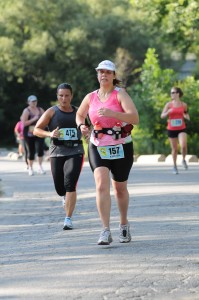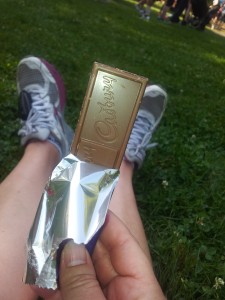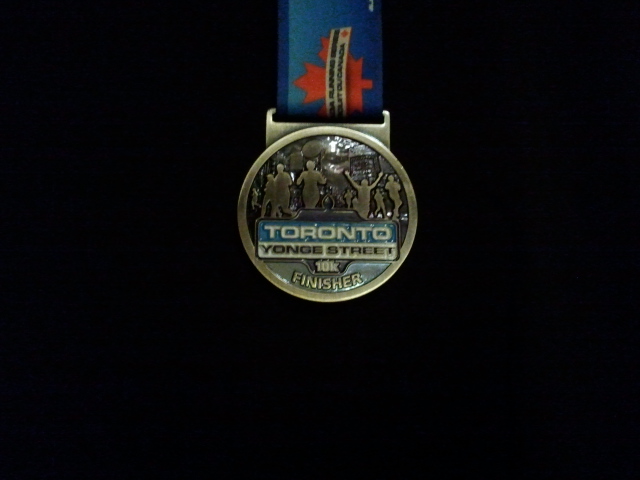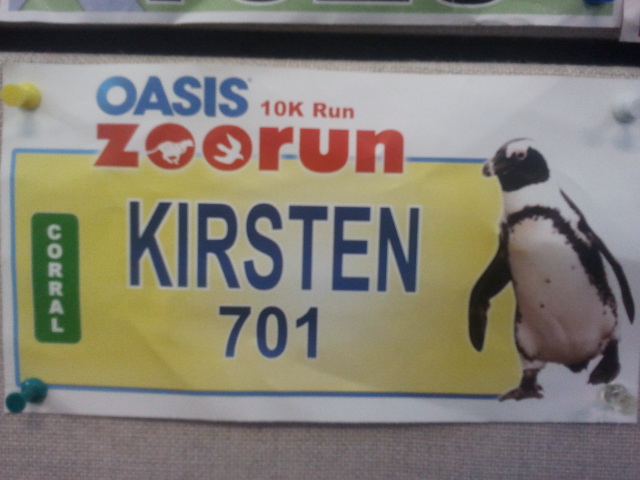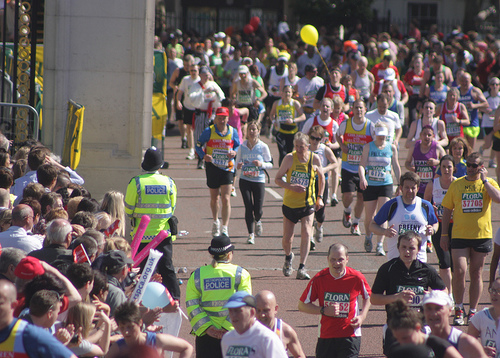The night before the Toronto Women’s 10K, I realized that I did not have a strategy for the race, nor did I have any kind of goal. And since I had just carbo-loaded on beer and chicken wings at the pub down the road, I didn’t feel motivated to give my race-day plan any thought. I laid out my outfit, set my alarm clock and went to bed. As I drove to the race the following morning, feeling a little the worse for wear, I decided that my strategy would be to simply finish the race. If I could come in somewhere under the 1:05:00 mark, which would put me at my average training pace, then so much the better.
I got to start area, picked up my race kit and got myself organized. I checked my bag, and with half an hour to go before the gun, I impulsively decided to warm up. This was a giant departure from my usual pre-race routine. Usually I arrive at the start area in a mad flap and spend half an hour in the Porta-Potty lineup before rushing to the start line as the gun is going off. The concept of taking the time to warm up is a novel one.
I ran a slow 2km, and then lined up at the start line with ten minutes to spare. The warm-up appeared to have worked, because when the race started I felt nicely loosened up. I didn’t have to spend time finding my rhythm. However, as usual, I went out too fast for the first three kilometres or so.
My usual strategy would have been to just keep running at a faster-than-wise pace until running out of steam, and then to huff and puff like the Big Bad Wolf for the last two or three kilometres. I have a pattern of maintaining a fabulous pace for the first three-quarters of a race and then letting it all fall apart at the end.
This time, I deliberately slowed down a little for the fourth and fifth kilometres. That gave me the opportunity to catch my breath and pick up the pace again for the second half of the race. I was able to keep up a good pace throughout, and even managed a big smile for the firemen who were manning the aid stations. When I started to feel rough during the 9th kilometre, I kept my mind on the prize. Not the finisher’s medal (although I was looking forward to that too), but the chocolate that was waiting for me on the other side of the finish line.
Passing the final kilometre marker in a race is always a boost for me. I know that at that point, with just one kilometre to go, I only have a few more minutes of running left. I usually have a great finishing kick, probably because I know that the faster I go, the sooner I can stop. The end of this race was even better than most. I ran the last kilometre in less than six minutes, finishing in a time of 1:02:13.
Considering my choice of beverage the previous night, I was very happy with this. After collecting my finisher’s medal, I happily sat on the grass enjoying my post-race snack.
This is an original post by Kirsten Doyle.
Photo credits:
Kirsten Doyle approaching finish line: Ryder Photography
Chocolate shot: Kirsten Doyle





